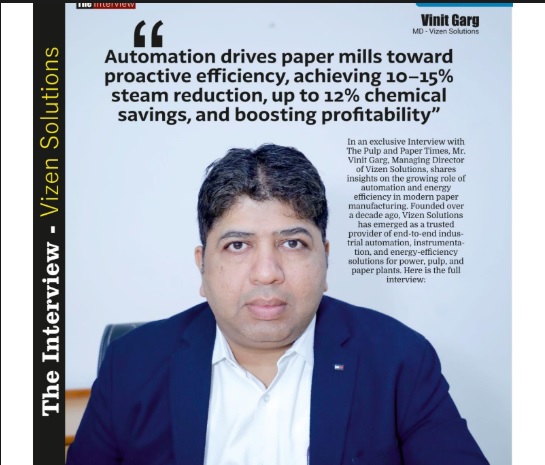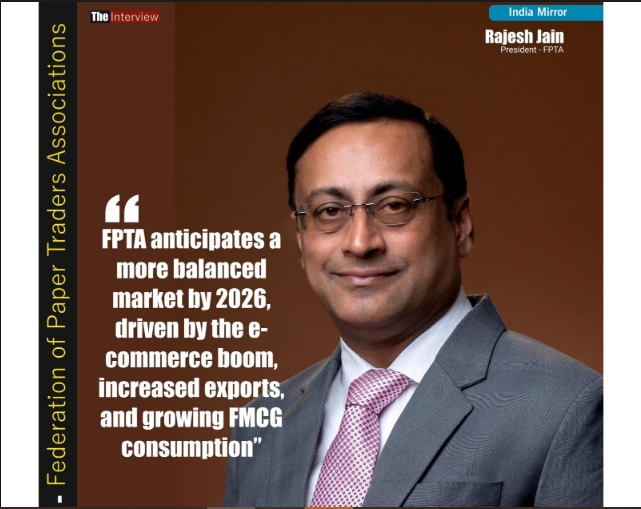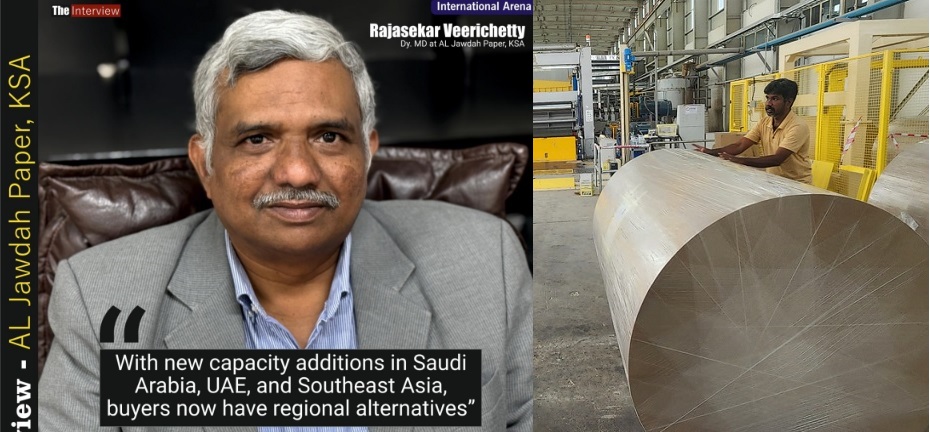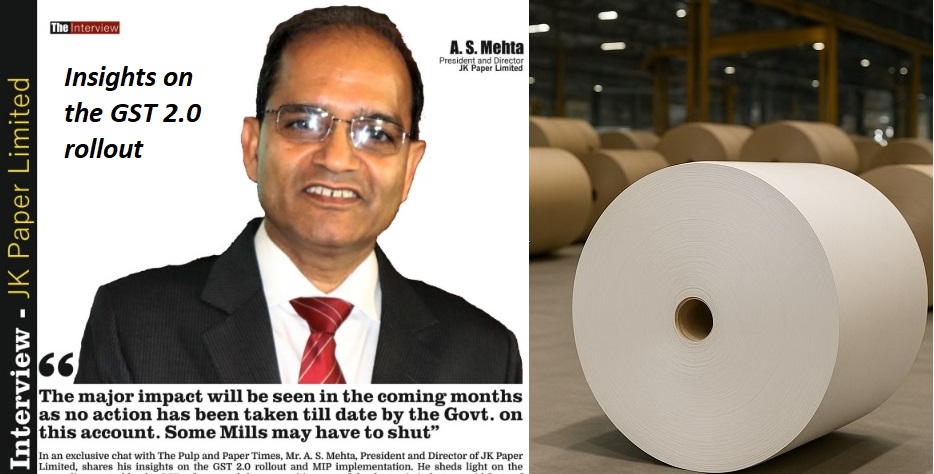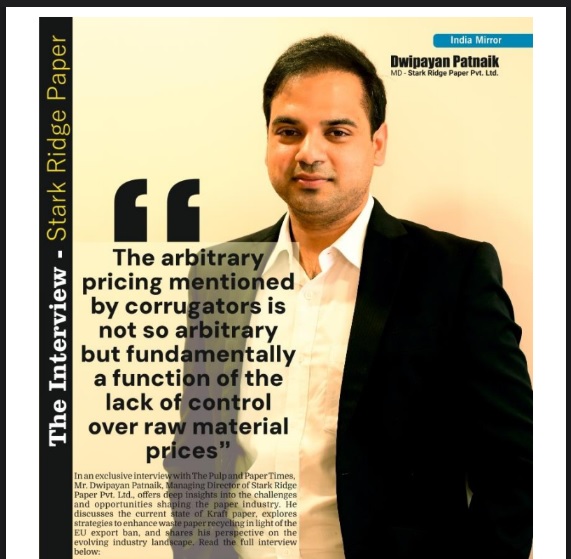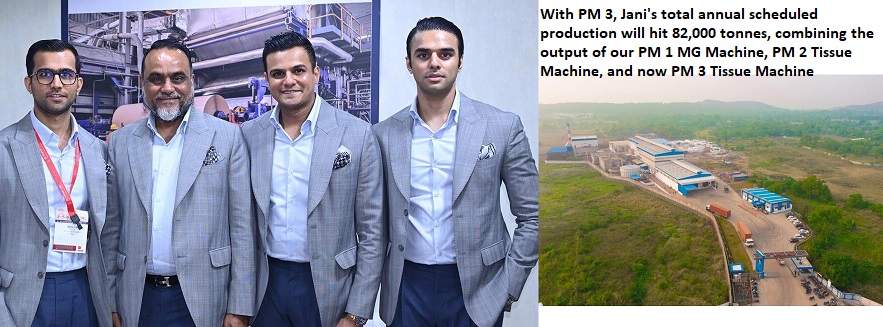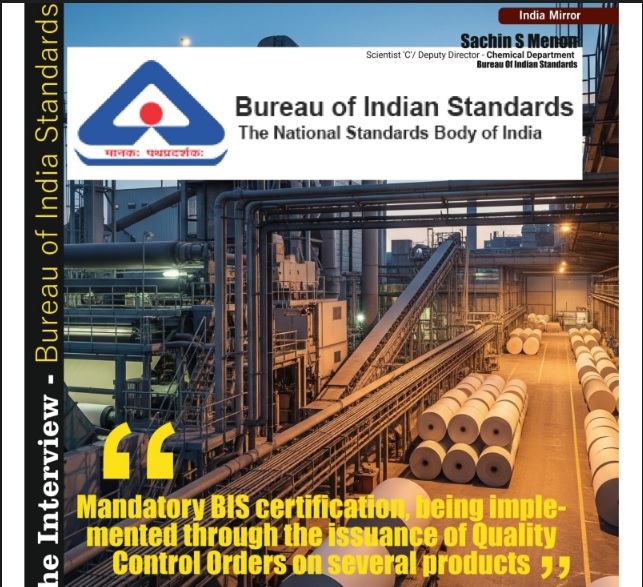Chadha Papers: Surge in new capacities drives shift from 18 BF paper to cup stock and bleached craft
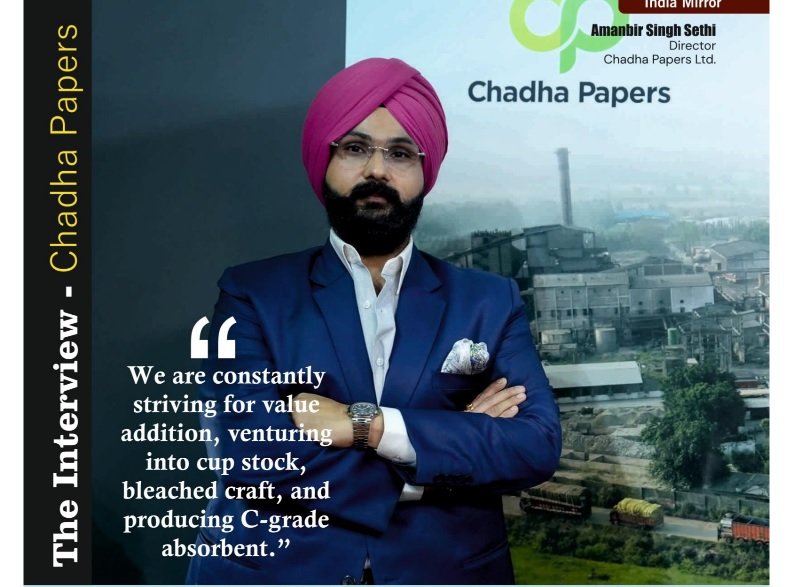
Chadha Papers: Surge in new capacities drives shift from 18 BF paper to cup stock and bleached craft
-Setting up a New Coating Line to produce Thermal, C1S and Cupstock paper
Exploring the dynamics of Chadha Papers: a candid interview on overcoming challenges, embracing innovation, and navigating the evolving paper industry. gain insights into the resilient journey of Chadha Papers, from its inception in 1991 to adapting to market fluctuations, shifting production focus, and spearheading eco-friendly practices. Join us as we delve into the visionary strategies, market perspectives, and future outlook with Mr. Amanbir Singh Sethi, Director, Chadha Papers Ltd. , the driving force behind Chadha Papers
The Pulp and Paper Times
Q: Give us a small introduction to your Chadha Papers.
Chadha Papers commenced production in 1991 but faced discontinuation in 2004 or 2008 due to family issues. In 2013, ownership transitioned within the family, and since then, I have been overseeing its operations. We specialize in manufacturing writing, printing, and craft grades, namely absorbent. Additionally, we've ventured into craft paper bags over the past 1-2 years. We are established suppliers in writing and printing to various government establishments, numerous states in India, and, of course, the market.
Q: In recent times, there have been ups and downs in imported waste paper prices. How did you manage those fluctuations successfully?
It was undoubtedly challenging. When the price of craft paper suddenly dropped by about $200-$300 within 2-3 months, it posed the toughest period for us, resulting in significant financial losses. Despite this, our partners and suppliers stood by us. By adapting to new rates and introducing new materials, we adopted an aggressive stance in the market, overcoming the challenges. The COVID period was particularly tough for writing and printing, but post-COVID, the segment has stabilized, aiding our recovery.
Q: Overcapacity has emerged in the market, impacting existing paper mills' production capacity. Do you believe overcapacity poses a threat to new expansion?
Absolutely, 101%. The influx of new capacities in the market raises concerns. We have already transitioned from 18 BF paper and are actively shifting our capacities to other products like cup stocks and bleached craft. Our focus on paper bags in North India has proven successful. Additionally, we are enhancing our writing and printing grades.
Q: Many paper mills are expanding their portfolios into different segments to mitigate competition. Is there any work being done in this area?
Certainly, we are constantly striving for value addition. Our efforts include venturing into cup stock, bleached craft, and producing C-grade absorbent. We are also investing in new machinery to recycle various raw materials and adopting eco-friendly practices. Setting up new coating lines for value-added products like thermal paper, C1S, sublimation paper, and biodegradable cup stock coating is part of our innovation strategy.
I think that is the future because PE is in a position to be banned at any time. We have already heard about it in a couple of states. If we don't do all this innovation, especially being a mill which is up north, I don't see a good future.
Q: Export from India has decreased. Do you think it can be stopped permanently, or only those with quality paper can export?
Quality paper will always hold value, and we must strive for that. However, international scenarios, especially fuel prices, play a significant role. If issues arise in Europe, India may find opportunities in Africa or the Gulf market based on fuel prices. But in the end, again, those who have this much overcapacity and those who have quality paper will be able to make their own place.
Q: There has been a significant increase in packaging paper capacity in South East Asia and Europe. Is the export scenario from India completely over?
Yes, it is essentially done. The focus is now on value-added products.
Q: Do you think excess capacity will be offset in a couple of years?
While growth will persist, some mills are wisely opting to shut down, realizing the impracticality of burning money.
Q: Odour is a significant problem in the paper sector. How do you address the odour or smell issue?
We have taken extensive measures to address odour problems. With land discharge permission, we've established a 100-acre Eucalyptus plantation around our mill. Our ETP is up to date, and after controlling DOD and COD levels, we utilize our own water for irrigation, contributing to the green belt surrounding us.
Q: What is the scenario of waste paper? Can it go down further, or will the market go up?
My personal intuition is that capacity is still increasing; You are still hearing that around 1000 tons per day plants are under process of commencement. I think it will go ahead and tighten.
Web Title: Chadha Papers: Surge in new capacities drives shift from 18 BF paper to cup stocks and bleached craft




 Join WhatsApp Group
Join WhatsApp Group Join Telegram Channel
Join Telegram Channel Join YouTube Channel
Join YouTube Channel Join Job Channel (View | Submit Jobs)
Join Job Channel (View | Submit Jobs) Join Buy Sell Channel (Free to Submit)
Join Buy Sell Channel (Free to Submit) Paper News Headlines Channel (Free to read)
Paper News Headlines Channel (Free to read)



